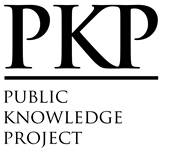Cultivation of seaweed Caulerpa racemosa on a laboratory scale using liquid organic fertilizer
Abstract
Indonesia is a maritime country that has seaweed natural resources that have the potential to be developed. Several types of seaweed have started to be cultivated by manipulating the cultivation environment such as providing various types of fertilizers to complement nutrient needs. This research was carried out at the Hatchery Laboratory of the Aquaculture Study Program, Faculty of Agriculture, Malikussaleh University in February –March 2020 which aims to determine the growth rate of Caulerpa racemosa by applying liquid organic fertilizer with different concentrations in the cultivation media. The design used was a non-factorial Completely Randomized Design (CRD) with 4 treatments and 3 replications, namely A Control (without giving liquid organic fertilizer), B (giving liquid organic fertilizer with a concentration of 0.22 mL fertilizer/L water), C (giving organic fertilizer). liquid concentration of 0.28 mL of fertilizer/L of water) and D (giving of liquid organic fertilizer with a concentration of 0.34 mL of fertilizer/L of water). The results showed that the application of liquid organic fertilizer had a very significant effect on the length growth rate of seaweed (Caulerpa racemosa). The best growth rate was in treatment D with a length growth rate of 9.2 cm. There was no significant difference between the weight growth rate and the regeneration rate of the thallus. However, based on the growth yield data for all treatments, it can be said that the higher the concentration of liquid fertilizer used, the better the growth of seaweed (Caulerpa racemosa).
Keywords: Caulerpa rasemosa; Pertumbuhan; Pupuk cair; Rumput Laut.
References
Ain, N., Ruswahyuni dan N, Widyoroni. 2014. Hubungan kerapatan rumput laut dngan substrat dasar berbeda di Perairan Pantai Bandengan Jepara. Dipenogoro Journal of Maquares. 3 (1) : 99 – 107.
Alam, A.A. 2011. Kualitas keraginan rumput laut jenis Eucheuma spinosum di Perairan Desa Punaga Kabupaten Takalar. (Skripsi). Fakultas Ilmu Kelautan dan Perikanan Universitas Hasanuddin Makasar,.
Alamsjah, M.A., W, Tjahningsi dan A,W Pratiwi, 2009. Pengaruh kombinasi NPK dan TSP terhadap pertumbuhan kadar air dan klorofil a Gracilaria verrucosa. Jurnal Ilmiah Perikanan dan Kelautan. 1 (1) : 101-106.
Beauchamp, E. 2012. Effects of UV radiation and salinity on the intertidal macroalgae Palmaria palmata and Ulva lactuca; effects on photosynthetic performance, growth and pigments. Plymouth Stud. Sci. 5, 3–22. 377.
Cotas, J.; Figueirinha, A.; Pereira, L.; Batista, T. 2019. The effect of salinity on Fucus ceranoides (Ochrophyta, Phaeophyceae) in the Mondego River (Portugal). J. Oceanol. Limnol, 37, 881–891. [CrossRef] 378.
Effendi, M.I. 1997. Metode biologi perikanan. Gramedia Pustaka Utama, Jakarta.
Guo, H,J. Yao, Z. Sun and D. Duan, 2014. Effect of temperature , irradiance on the growth of the green alga Caulerpa lentilifera (Bryopsidophyceae, Chlorophyta). Journal of Applied Phycology. 33(2): 879- 885.
Ilustrisimo, C. A., Palmitos, I. C., & Senagan, R. D. (2013). Growth Performance of Caulerpa lentillifera (Lato) in Lowered Seawater pH.[Research Paper]. Science and Technology in Partial Fulfillment of the Requirement, Philippines, 33.
Kim, J. K., Yarish, C., Hwang, E. K., Park, M., & Kim, Y. (2017). Seaweed aquaculture: cultivation technologies, challenges and its ecosystem services. Algae, 32(1), 1-13.
Kushartono, E. W.,Suryono and E. Setianingrum. 2009. Aplikasi Perbedaan Komposisi N, P, dan K Pada Budidaya Eucema cattoni di Perairan Teluk Awur, Jepara. Jurnal Ilmu Kelautan 14 (3): 164–169.
Mamang, N. 2008. Laju Pertumbuhan Bibit Rumput Laut Euceuhma cottoni dengan Perlakuan Asal Thallus Terhadap Bobot Bibit Di Perairan Lekaba, Kota Bau–Bau Sulawesi Tenggara. (Skripsi). Fakultas Perikanan dan Kelautan Institut Pertanian Bogor, Bogor, 121 hlm.
Nasmia, Rosyida, E., Masyahoro, A., Putera, F. H. A., & Natsir, S. (2020). The utilization of seaweed-based liquid organic fertilizer to stimulate Gracilaria verrucosa growth and quality. International Journal of Environmental Science and Technology, 18(6). 1637-1644.
Nurfebriani, D. N., Rejeki, S., & Widowati, L. L. (2015). Pengaruh Pemberian Pupuk Organik Cair dengan Lama Perendaman yang Berbeda Terhadap Pertumbuhan Rumput Laut (Caulerpa lentillifera). Journal of Aquaculture Management and Technology, 4(4), 88-94.
Silea, L.M.J. dan L, Mashita, 2006. Pengaruh pupuk bionic pada tanaman Rumput laut (Eucheuma sp) Fakultas Perikanan dan Ilmu Kelautan Unidayan.
Setiaji, K., G.W. Santosa dan Sunaryo. 2012. Pengaruh Penambahan Npk dan Urea Pada Media Air Pemeliharaan Terhadap Pertumbuhan Rumput Laut Caulerpa Racemosa var. Uvifera. Journal of Marine Research. 1(2): 45- 50
Suniti, N. W., & Suada, I. K. (2012). Kultur In-Vitro Anggur Laut (Caulerpa lentilifera) dan Identifikasi Jenis Mikroba yang Berasosiasi. Agrotrop, 2(1), 85-89.
Suthar, P.; Gajaria, T.K.; Reddy, C.R.K. 2019. Production of quality seaweed biomass through nutrient optimization for the sustainable land-based cultivation. Algal Res, 42, 101583. [CrossRef]
Yudasmara, G.A. 2014 Budidaya Anggur Laut (Caulerpa rasemosa) Melalui Media Tanam Rigid Quadrant Nets Berbahan Bambu. Universitas Pendidikan Ganesa 3 (2).
Yulianda, F., Yusuf, M. S., & Prayogo, W. (2013). Zonasi dan kepadatan komunitas intertidal di daerah pasang surut, pesisir Batuhijau, Sumbawa. Jurnal Ilmu dan Teknologi Kelautan Tropis, 5(2), 409-416.
DOI: https://doi.org/10.29103/aa.v9i1.5502
 Article Metrics
Article Metrics
 Abstract Views : 172 times
Abstract Views : 172 times
Refbacks
- There are currently no refbacks.
Copyright (c) Acta Aquatica: Aquatic Sciences Journal

This work is licensed under a Creative Commons Attribution 4.0 International License.









